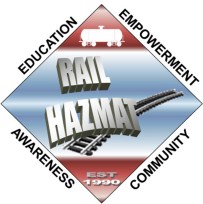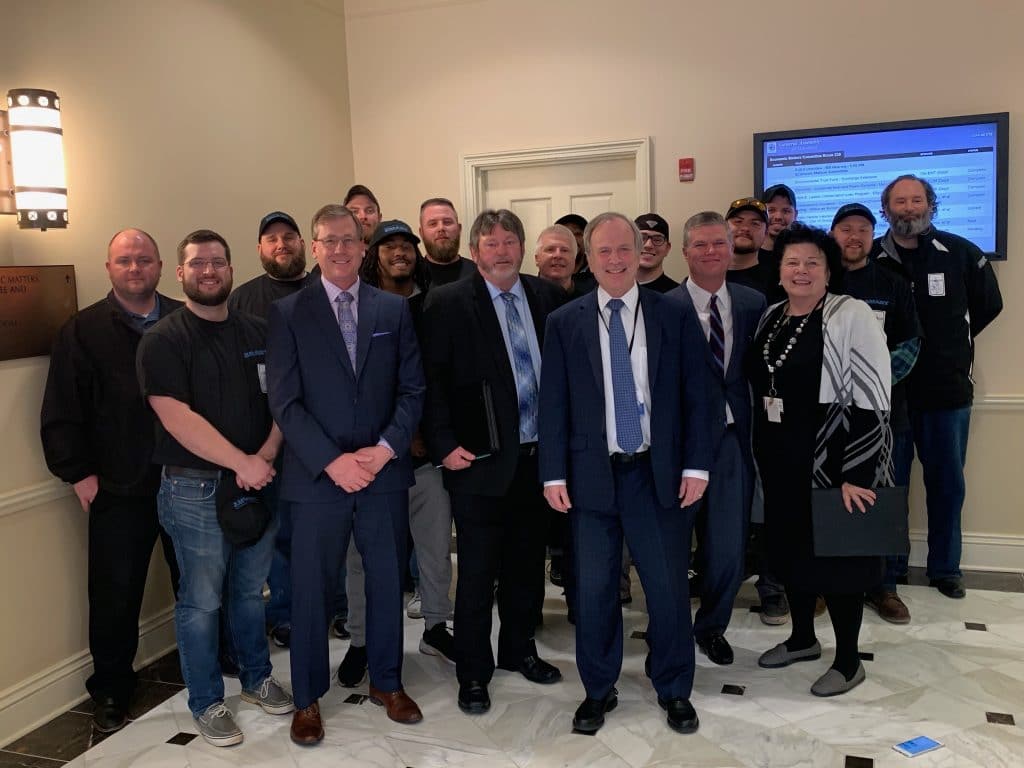Capital expenditures in 2019 will largely remain flat from the previous year for five of seven U.S. Class I railroads, according to financial reports released by the carriers.
BNSF spent $3.4 billion in 2018 and is one of two carriers that plan to increase capital expenditure spending. The railroad announced a $3.57 billion spending plan for 2019 on Feb. 13, an increase of 5 percent over the year prior.
Canadian National will invest approximately $2.94 billion (U.S.) in its capital spending program with $1.2 billion targeted toward track and railway infrastructure maintenance — an amount similar to what was spent last year. The remainder will largely be used to acquire new locomotives, the carrier said.
Canadian Pacific Railway’s spending will stay at $1.2 billion (U.S.), according to the carrier’s fourth-quarter and full-year earnings statements.
CSX’s capital spending budget will come in somewhere between $1.6 and $1.7 billion, the company said, also at about the same level as the year prior.
Kansas City Southern announced a planned increase of spending from $530 million in 2018 to between $640 million and $660 million. The increase is mostly because of the planned $140 million acquisition of new locomotives, KCS officials said. The carrier said spending on maintenance of way and other engineering projects will be at the same level as the previous year.
Norfolk Southern company officials said at a February investors conference that 2019 capital expenditure levels for 2019 would be between 16 and 18 percent of revenue in the range of $1.8 and $1.9 billion, a level consistent with the $1.8 billion the carrier allocated for capital expenditures in 2018.
Union Pacific committed to $3.2 billion in capital spending for 2019, the same amount it says it invested in 2018, according to its fourth quarter earnings filing.
Genesee and Wyoming, a large operator of American short-line railroads, expects to increase its capital expenditures by about $10 million in 2019, it announced in early February. In 2018, G&W spent $205.7 million; G&W expects to spend $215 million this year.
Author: bnagy
Robert Peterson, a BNSF conductor out of Local 951 (Sheridan, Wyo.), questions the cost and need for freight railroads to push into automated technology in an opinion piece published Feb. 12 on the Railway Age website.
Class I freight carriers are thriving with booming profits and record operating ratios, Peterson argues, and are doing so with two people in the cab and by supporting the efforts of crews with newly developed advances in technology.
In addition, he writes, Federal Railroad Administration data shows that the industry as a whole is going through a period of decline in accident rates.
“This data implies an improved safety trend is due in part to current operating rules that utilize two-person train crews and technological safety advances in train operations,” he writes.
And, while the fully autonomous Rio Tinto AutoHaul operation has drawn headlines, it cost the company upwards of $900 million, Peterson writes, and this kind of operation may not even be economically feasible in the United States with the differences in terrain, the 140,000 miles of Class I trackage and other considerations, including the type of materials hauled.
“Is the American public ready to gamble lives on a computer-run vs human-run freight train?” Peterson concludes.
Follow this link to read the entire column on the Railway Age website.

The training will be held April 10 to 14 in Winslow, Ariz., and attendees must use their own personal vehicles to get to the training. Air transport is not provided for this session.
Those who have taken the 40-hour chemical emergency response course in the last three years should not register for this round of training.
The Rail Workers Hazardous Materials Training Program is funded to provide this training by a federal grant from the National Institute of Environmental Health Sciences (NIEHS).
A flier about the sessions is available to post at your worksite.
Follow this link to register online.
For more information, call 202-624-6963 from 9 a.m. to 5 p.m. Eastern, Monday through Friday.
A mobilization of SMART members urging the passage of a state two-person crew bill in Maryland made their voices heard on Thursday (Feb. 7).
The bill, which requires two crew members on freight rail trains, was introduced by Delegate Dana Stein, who represents Maryland’s District 11.
“I want to personally thank the sponsor, who did an excellent job introducing the legislation and explaining in detail the need for Maryland to pass this very important rail safety legislation, and the members from both Sheet Metal and Transportation Division who came to the hearing in support for the bill and in a show of solidarity,” said Maryland State Legislative Director Larry Kasecamp. “On to the Senate we go!”
Testimony from Kasecamp, SMART TD Designated Legal Counsel Matt Darby, the submission of more than a dozen letters of support from affiliated unions by Donna Edwards, president of the Maryland State & D.C. AFL-CIO, and additional testimony from first responders, local elected officials and Local 631 Legislative Representative Tom Cahill helped to compel the committee.
Because of continued demand, a workshop has been scheduled in March to help local treasurers learn how to use TD Connect, the new eBilling system that also manages member records. Numerous workshops scheduled in late 2018 and early this year filled to capacity. Follow the link below to register.
Register online for the March 19-21 TD Connect workshop in Cleveland.
The workshop registration deadline is March 13, 2019.
A flier is available with additional information about accommodations and the workshops (PDF).
Attendees are responsible for arranging their own travel and hotel rooms. Visit this link for a list of discounts available in the area.
The workshop sessions will run from 9 a.m. – 5 p.m. on all three days in the first-floor training room at the SMART Transportation Division office, 24950 Country Club Blvd., North Olmsted, Ohio.
For any additional information about the workshop, please call Alyssa Patchin at 216-227-5281 or email apatchin@smart-union.org.
Survey results released by SMART Transportation Division’s Nevada State Legislative Board today show that voters in the state overwhelmingly side with the passage of regulations that require freight trains to be operated by crews consisting of a minimum of two people.
After being asked questions and given information on railroad safety, a staggering 89 percent of respondents to a phone survey, conducted Jan. 28 to 31, 2019, said they would vote for a two-person rail crew law in the interest of keeping their communities safe.
Just 13 percent of survey respondents had known that just two people serve on freight train crews, while 57 percent thought that three or more people operate a train.
A second crewmember on the train allows for better monitoring of traffic at rail grade crossings, investigates incidents such as grade crossing collisions or derailments when they occur and can communicate or supervise as needed with the engineer to avoid mistakes during the train’s operation, including when the train is secured (tied down).
The catastrophic Lac-Mégantic disaster in 2013 devastated a town in Quebec, Canada, and occurred when a lone crewmember left his train unattended. The oil-carrying train then rolled into the town with no one aboard, and the resulting blast and inferno leveled a portion of the town center and killed dozens of people.
“A second crewmember could have made all the difference in that tragedy,” said Jason Doering, director of the SMART TD Nevada State Legislative Board.
When asked in the survey, Nevada residents agreed:
“Nearly nine of 10 respondents to this poll came out with the understanding of the safety benefits of having more than one person operating a freight train. Safety is a top priority for them, and they want it made law. Requiring all trains in the state to be operated by a crew of at least two people, no exceptions, makes perfect sense, despite what industry interest groups say,” Doering said. “When the duties of each crewmember were spelled out, poll respondents recognized that running a freight train with a single crewmember was a safety risk they would not want to see taken, even with future enhancements in rail technology.”
Nearly 75 percent said that they did not trust advanced technology to serve as a replacement for a crewmember. More than eight of 10 (81 percent) of those surveyed expressed at least some concern of a single-person crew train derailing in their community, and more than half (51 percent) said they were “very” worried that a freight train with one crewmember would derail. Just 19 percent of respondents thought the replacement of a crewmember with advanced technologies would be sensible.
“Those surveyed did not want the safety of where they live left to chance,” Doering said. “They want more than one person on the trains that roll through our communities, carrying goods and hazardous materials through our state at all hours. There is absolutely no question in their minds that two-person crews are safer for all — workers and community members.”
Respondents expressed favorable views of passenger rail, with 55 percent in support of the creation of a high-speed rail line linking Las Vegas and southern California and 61 percent saying that Amtrak should increase available passenger rail service in the state.
The poll, taken by DFM Research of St. Paul, Minnesota, was of 500 random Nevada residents using both cell phones and landlines. The total margin of error of this poll is ±4.4 percentage points with a 95 percent confidence.
Read the full results of the survey (PDF).
President Donald Trump today (Jan. 31) signed an executive order, “Strengthening Buy American Preferences for Infrastructure Projects,” encouraging the use of U.S.-made materials when undertaking infrastructure projects that get federal funding.
The goal is to boost the purchase of domestic products, such as aluminum, steel, iron and concrete in federally funded projects to repair and improve sewers, roads and other vital parts of the country’s network.
The president’s order falls short of a mandate and does not set required levels to be purchased or create an enforcement mechanism.
A previous executive order, signed April 17, 2017, took a similar route, and this order signed Jan. 31 is intended to fill “gaps,” according to a presidential economic adviser.
Read more on The Hill website.
Amplifon’s latest news release discusses a recent study conducted by researchers at Massachusetts General Hospital that indicates that chronic noise exposure may increase the risks for cardiovascular conditions.
The preliminary findings reveal that people with the highest levels of chronic noise exposure – such as highway and airport noise – had a three-fold increased risk of suffering cardiovascular events such as heart attacks and strokes, regardless of other factors known to increase cardiovascular risk.
Read the full article from Amplifon, a partner in SMART Transportation Division’s H&W program, at the Amplifon website.
